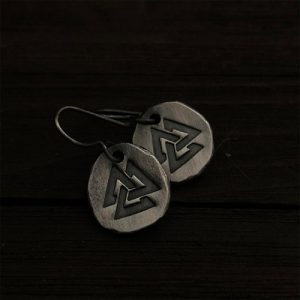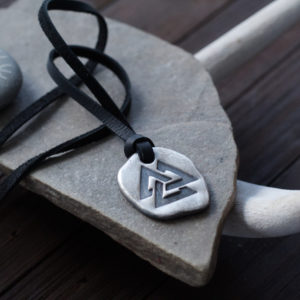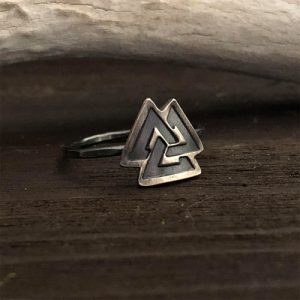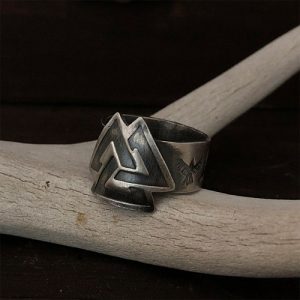The Valknut symbol, with its three entwined triangles, stands as a captivating enigma in the realm of Norse mythology. Frequently appearing on ancient relics like the Tängelgårda stone, this symbol is deeply entrenched in the cultural and spiritual life of the Norse people.
Its connection to the god Odin, a pivotal figure known for his wisdom and association with the dead, suggests the Valknut’s significant role in the practices and beliefs of Viking-era societies.
As we delve into the Valknut’s origins and meanings, we uncover a layer of mystery that continues to intrigue scholars and enthusiasts of Norse paganism today.
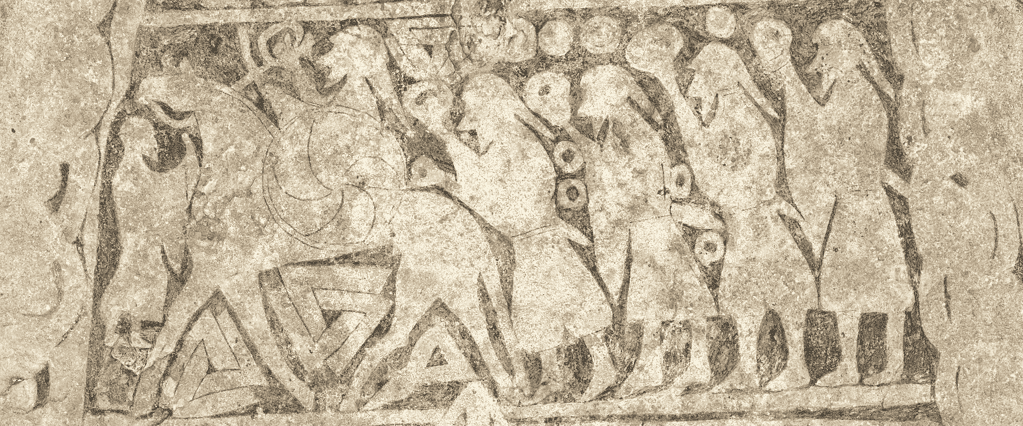
Table of Contents
What is the Valknut?
The Valknut is an ancient symbol often found in the context of Norse mythology and Viking archaeological sites. It consists of three interlocking triangles that form a knot-like design. This distinctive shape has sparked the curiosity of many who are fascinated by its enigmatic presence on various historical artifacts and its ties to Viking beliefs.
The Visual Description and Common Names
Visually, the Valknut is recognized by its three interconnected triangles, which can appear in different forms, such as the unicursal form, where the triangles are linked in one continuous line, or the tricursal form, with each triangle being separate but interlocking.
The symbol’s name, “Valknut,” is modern, derived from Old Norse words translating to ‘knot of those slain in battle.’ It is also known as “Hrungnir’s heart,” after the giant Hrungnir from Norse mythology, and as “the heart of the slain,” indicating its association with death and Odin, the god who presides over Valhalla, the hall of the fallen warriors.
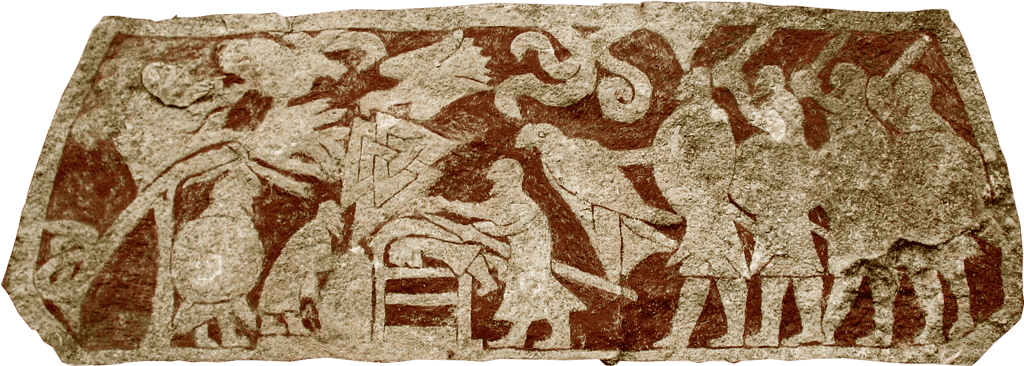
Archaeological Findings Featuring the Valknut
The Valknut symbol has been unearthed at numerous significant Norse archaeological sites, attesting to its historical and cultural importance. For example, the Lärbro Tängelgårda stone on the Swedish island of Gotland display as well as the Stora Hammars stone, this symbol prominently, suggesting a ritual or symbolic significance.
Perhaps the most famous depiction of the Valknut is found on the Oseberg ship burial, a well-preserved Viking ship discovered in Norway, which has provided invaluable insights into Viking burial customs and their spiritual beliefs.
Here, the Valknut is associated with Odin and is believed to signify the transition of warriors’ souls to the afterlife, underlining its profound connection to Norse views on death and the afterlife.
These findings not only highlight the Valknut’s presence in Norse cultural artifacts but also its revered status among the Viking and Germanic peoples. Each archaeological instance of the Valknut brings with it a layer of interpretation and mystery, contributing to our understanding of how the ancient Norse viewed the divine and their own mortality.
As such, the Valknut remains not just a symbol of ancient artistry, but a bridge to the spiritual and mythological worldviews of the Norse.
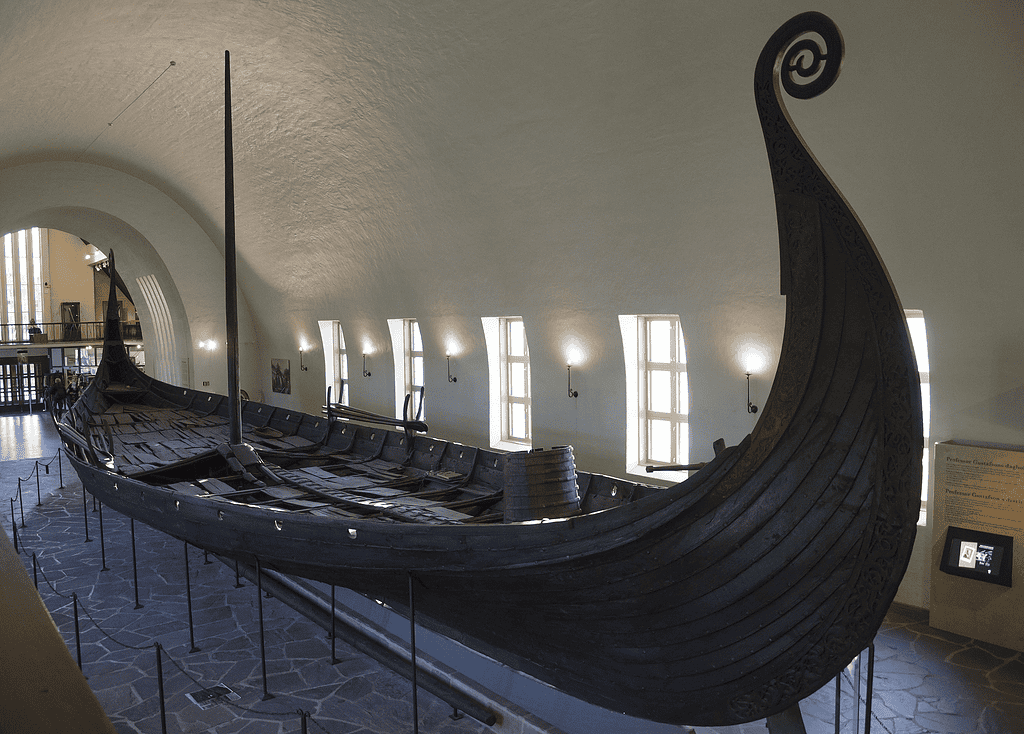
The Oseberg ship (Viking Ship Museum, Norway) – Petter Ulleland
Mythological Significance of the Valknut
The Valknut, with its intricate knotwork of three interlocking triangles, is deeply entwined with Norse mythological themes, particularly those involving Odin and the afterlife. This symbol’s recurrent appearance alongside depictions of Odin and in grave sites underscores its spiritual and ceremonial importance in ancient Norse culture.
Connection to Odin and the Slain Warriors
In Norse mythology, Odin is not only the god of wisdom but also the overseer of Valhalla, the hall where brave warriors are said to reside after death. The Valknut is often found in artistic depictions involving Odin, suggesting it may symbolize his power over life and death.
This connection positions the Valknut as a symbol of Odin’s ability to bind and unbind, mirroring his role as a psychopomp, guiding the souls of the slain warriors to their rightful place in the afterlife. Such imagery reinforces the Valknut’s perceived role as a beacon for those chosen by Odin for their valor.
The Valknut’s Role in Norse Funerary Practices
The presence of the Valknut in Norse burial sites and on funerary artifacts suggests that it played a significant role in rituals intended to secure a safe passage for the deceased’s soul. For instance, the Oseberg ship burial, rich with grave goods and marked by the Valknut, points to the symbol’s function in safeguarding the departed’s journey to Valhalla.
This interpretation is supported by various archaeological finds across Scandinavia, where the Valknut appears on stone carvings and other items associated with the Norse ritual of death, hinting at its integral role in ceremonies designed to honor and protect the dead.
The recurring motifs of the Valknut in these sacred contexts invite us to consider its dual implications: as a protective talisman and as a mark of divine selection by Odin, highlighting its profound resonance within the Norse spiritual landscape.
Interpretations and Controversies
The Valknut, a symbol rich with mystery and significance, has been interpreted in various ways over the years, sparking scholarly debates and controversies regarding its true meaning and usage. Understanding this symbol requires a careful examination of historical, cultural, and textual evidence, as interpretations can vary widely depending on the context in which the symbol is studied.
Scholarly Perspectives on the Valknut
Historians and scholars have long debated the Valknut’s origins and meanings, drawing upon a range of literary sources and archaeological findings. H.R. Ellis Davidson, a prominent historian in the field of Norse mythology, suggested that the Valknut could be connected to the god Odin and seen as a symbol of death and transformation, given its frequent appearances in grave sites and its depiction alongside Odin in Norse art.
References in texts like Snorri Sturluson’s Prose Edda provide additional layers of interpretation, hinting at the Valknut’s possible role in ancient Norse rituals involving the dead and the slain warriors’ journey to the afterlife. The text connects the Valknut to the power of Odin over life and death, hinting at its role in the rites of passage for the dead.
The Ambiguity and Misinterpretations
Despite the wealth of scholarly attention, the Valknut remains shrouded in ambiguity, with its true meaning often obscured by the passage of time and the fragmentary nature of surviving sources.
This ambiguity has led to various misinterpretations, particularly in modern times where the symbol has been co-opted by different groups for diverse purposes, often detached from its original Norse cultural context. The risk of such misinterpretations is significant, as they can distort or oversimplify the complex cultural and religious landscape of the Viking Age.
Scholars like Davidson have cautioned against reading too much into the scant evidence, advising that interpretations be approached with an understanding of the symbol’s deep roots in Norse artistic and religious life (Davidson, 1990, p. 59).
The importance of context in interpreting the Valknut cannot be overstated. Each depiction of the symbol—from the Oseberg tapestry fragments to the stone carvings on Gotland—must be considered within its specific archaeological and cultural setting.
Only by acknowledging the diversity of these contexts can a more nuanced understanding of the Valknut’s meanings be achieved. This cautious approach helps to avoid the pitfalls of anachronistic interpretations and ensures that the symbol is respected as a complex representation of Norse belief systems rather than a straightforward emblem with a single, unchanging meaning.
In exploring these scholarly perspectives and debates, we gain not only a deeper insight into the Valknut itself but also a broader understanding of how symbols like these functioned within Norse culture, serving multiple purposes and embodying a range of meanings that could vary significantly across different contexts and times.
Such explorations underscore the rich tapestry of Norse mythology and the enduring fascination with its symbols and stories.
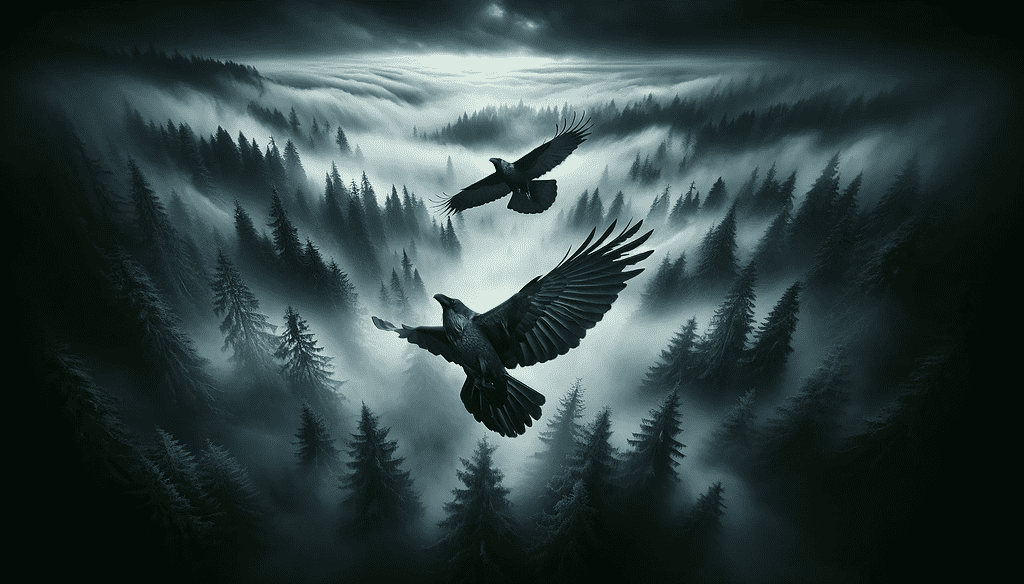
The Valknut and Norse Cosmology
The Valknut, with its enigmatic interlocking triangles, extends beyond mere artistic motif to embody the profound and interconnected themes of Norse cosmology. This symbol offers a fascinating lens through which to view the ancient Norse’s understanding of the universe and their beliefs about the fabric of fate itself.
The Valknut and Yggdrasil
The Valknut is thought by some scholars to be symbolically linked to Yggdrasil, the immense ash tree that anchors all worlds in Norse mythology. The triadic form of the Valknut could represent the connection between the nine worlds that Yggdrasil binds together. This interpretation suggests a cosmological dimension to the Valknut, positioning it as a metaphor for the unity and interdependence of all realms and beings in the Norse mythological universe.
Symbolism of Interconnection and Fate
Delving deeper into the mythological essence of the Valknut, its intertwined design may also be seen as a representation of orðr, or fate. In Norse belief, fate is not merely a sequence of events but a complex interplay of actions, wills, and divine forces.
The intertwining lines of the Valknut could thus be visual metaphors for the woven threads of fate, overseen by the Norns, the Norse goddesses of destiny. This aspect of the Valknut highlights its potential role as a symbol of the inevitable interconnection of life’s paths, where the destinies of gods and mortals are inexorably linked.
These interpretations enrich our understanding of the Valknut, positioning it not just as a marker of death or the divine, but as a profound emblem of the Norse cosmological view, where everything is interconnected through the roots and branches of Yggdrasil and the woven strands of fate.
This perspective opens up a broader appreciation of Norse art and mythology, showcasing the depth and complexity of their symbolic expressions.
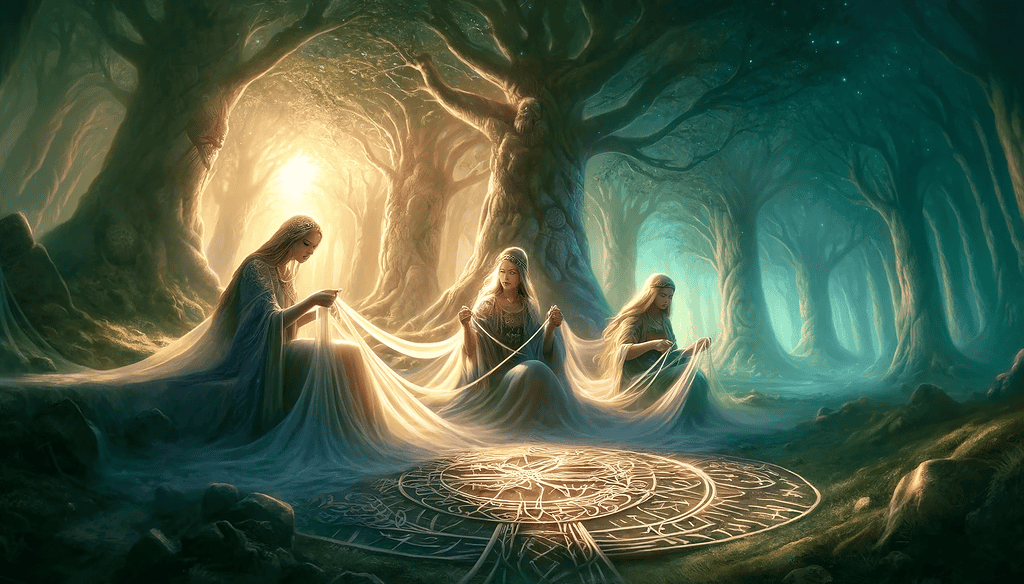
Reflecting on the Valknut’s Mystery
The Valknut remains one of the most intriguing and enigmatic symbols from Norse mythology, its precise meanings as intertwined and complex as the knots it depicts. Despite centuries of scholarly research and the fervent debates that have surrounded its true significance, the full understanding of the Valknut continues to elude us. This enduring mystery only enhances its appeal, drawing us deeper into the rich tapestry of Norse cultural and spiritual life.
Embracing the Unknown
While the absolute truth about the Valknut may forever remain just beyond our grasp, this uncertainty does not diminish our fascination with the symbol. For many, the Valknut is more than an artifact of ancient history; it is a vibrant part of their cultural and ancestral identity. It connects them to a past that is steeped in the mystique and power of Norse gods, heroes, and the revered ancestors whose lives were intertwined with these mythic narratives.
A Symbol of Connection
For those who feel the call of the Valknut, it represents a profound link to their heritage—a thread that connects them to the spirits of their forebears. This connection is enough to keep the symbol alive in their hearts and practices. The Valknut stands as a proud emblem of a shared history and a common belief in the mystical elements that shaped the Norse way of life.
Through the Valknut, we are reminded of the importance of respecting and preserving these ancient symbols as gateways to understanding our past, even as we acknowledge the limits of our knowledge. This balance between knowing and wondering is what keeps the legacy of the Norse people vibrant and meaningful in our modern world.
References:
Davidson, H. (1990). Gods and Myths of Northern Europe. United Kingdom: Penguin Books Limited.
Handmade Valknut Jewelry
Please check out some Valknut jewelry made by me, The Wicked Griffin.

